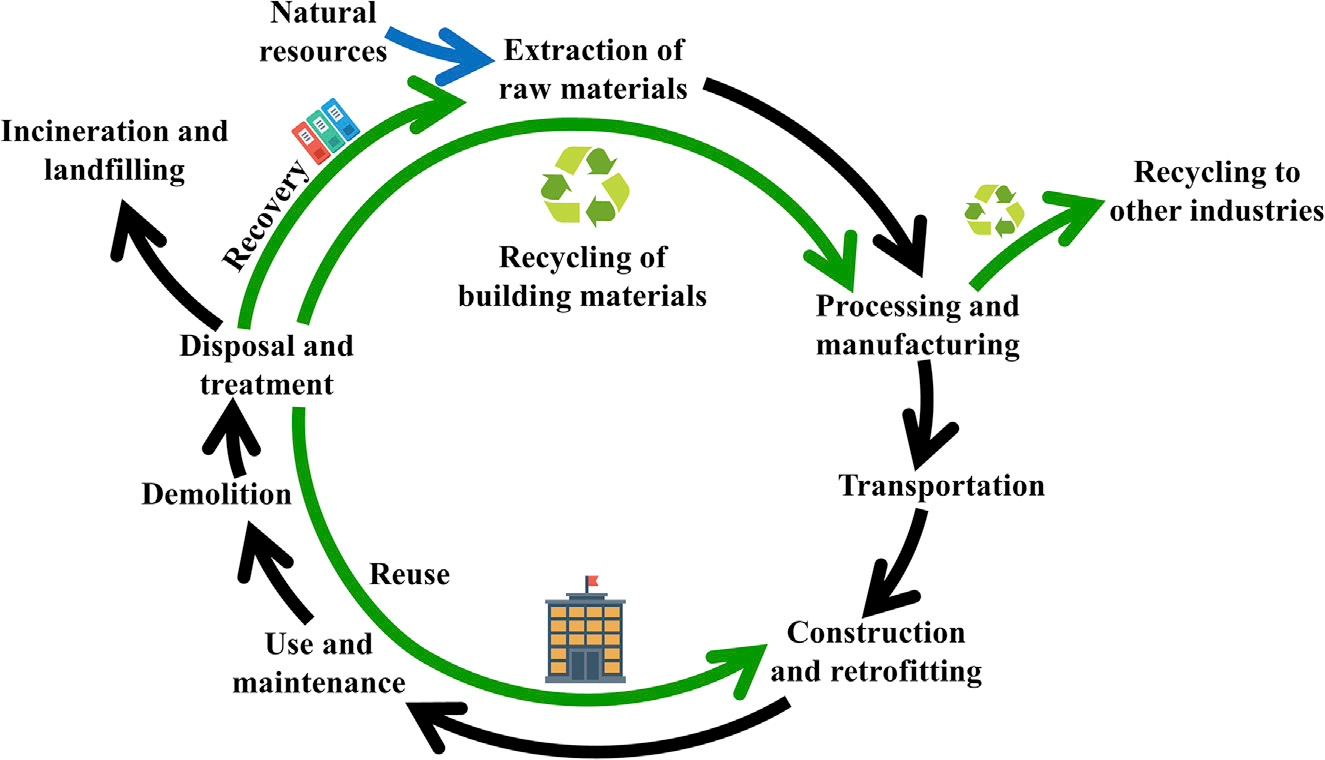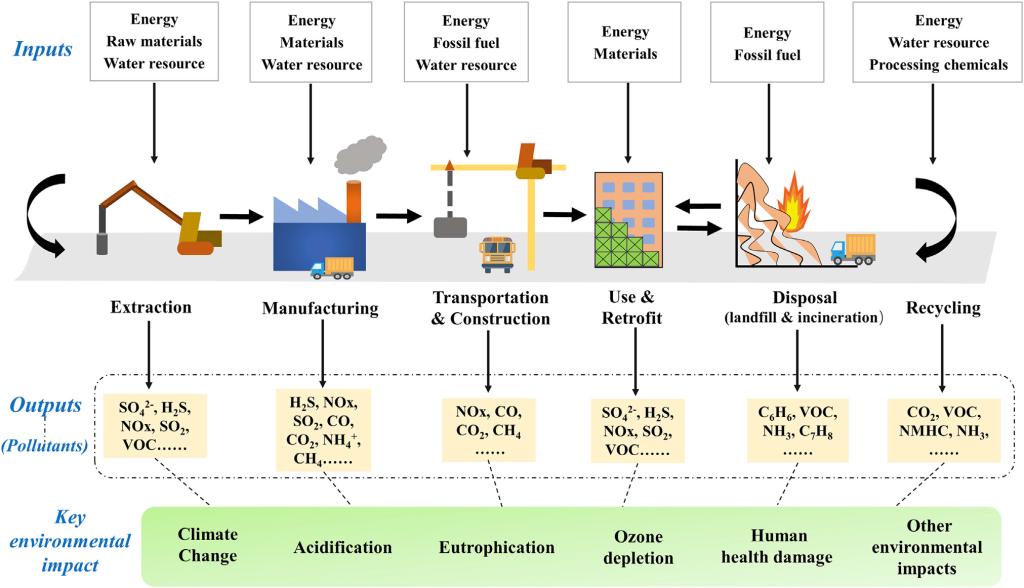Recently, Prof. Huang Beijia from School of Environment and Architecture published a paper entitled “A life cycle thinking framework to mitigate building material environmental impacts” in One Earth, a sister journal to Cell. This is a perspective paper that Prof. Huang contributed to the journal at the invitation of its editors, aiming to provide some innovative ideas for problems in urban sustainable development.
In the context of rapid urbanization, the construction industry is a main industry of urban resources and energy consumption and also a major source of environmental pollution. Among a series of sustainable development plans for the construction industry, most plans only focus on specific stages (such as building materials production, construction, operation and maintenance, building demolition and disposal), resulting in plans that have achieved energy saving and emission reduction at particular stages but produced negative benefits from the perspective of full life cycles. To avoid this, Dr. Huang calls for full life cycle analysis so as to systematically evaluate energy-saving and emission-reduction plans in the construction industry.

The paper first systematically explains the life cycle process for construction, and introduces the framework of life cycle assessment. The study combines qualitative and quantitative analysis and assessment of main environmental impacts generated at different stages, finding that in addition to climate change, human toxicity is another type of environmental impact that should be given more attention for building materials. By using Life Cycle Analysis (LCA), Material Flow Analysis (MFA) and Geo-Information System (GIS), the paper presents a prediction of long-term and large-scale distribution of building materials and concludes that concrete waste in China will reach a peak around 2030. The combination of different analytic tools can provide scientific guidance for future industrial distribution of building material production as well as construction waste treatment and management. Considering that construction has a longer life cycle than other products, this study has also discussed how to break through various challenges in the life cycle management of the construction industry, including inventory data collection and stakeholder cooperation.

Prof. Huang Beijia was supported by the “2018 Chengfeng Grant”, a program initiated by the University of Shanghai for Science and Technology (USST) to promote international academic exchange and cooperation. During her stay in Yale University and Tokyo University, Prof. Huang cooperated with scholars in the establishment and application of life cycle methodology.
The paper came as the result of cooperation between Prof. Huang and Tokyo University as well as other partner universities, such as Shanghai Jiaotong University, Worcester Polytechnic University, IDC Herzliya and National University of Singapore. Prof. Huang is the first author and graduate students in her team at USST, Xu Xiaozhen and Song Jialing (the third and fourth author respectively), contributed to the completion of the paper.
Link to the paper: https://www.sciencedirect.com/science/article/pii/S2590332220305406
Source from School of Environment and Architecture


